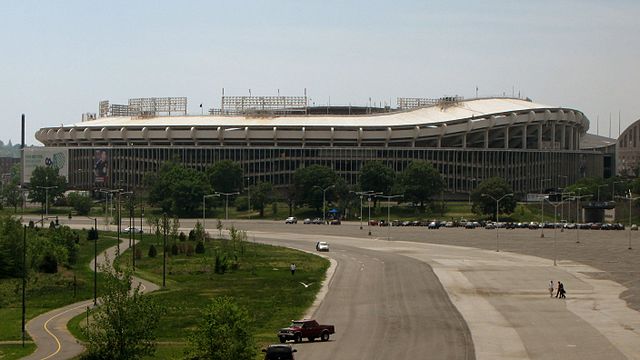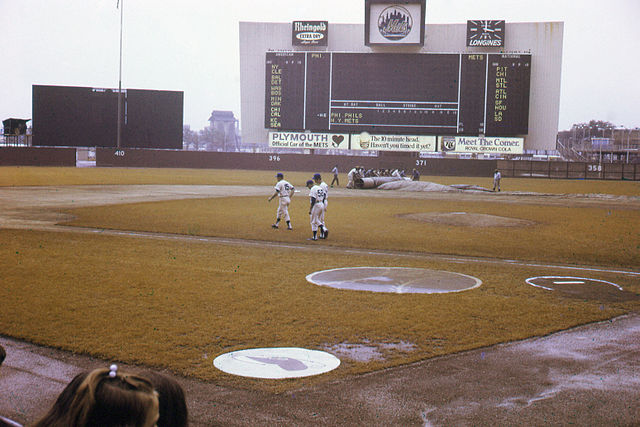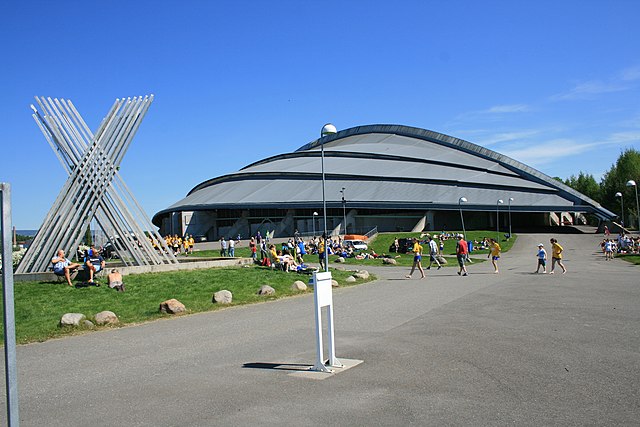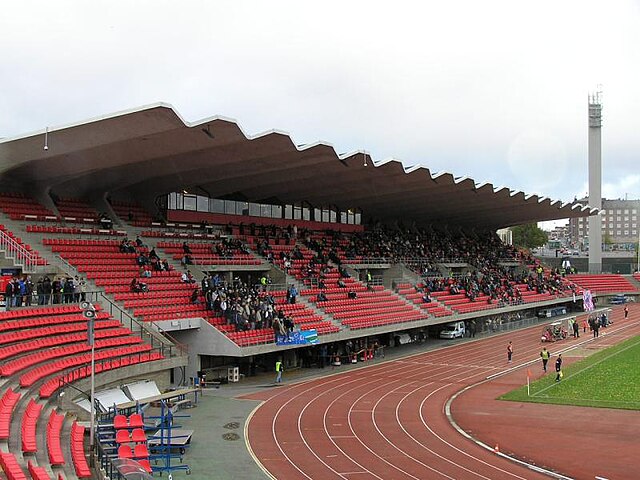Shea Stadium, formally known as William A. Shea Municipal Stadium, was a multi-purpose stadium in Flushing Meadows–Corona Park, Queens, New York City. Opened in 1964, it was home to the New York Mets of Major League Baseball (MLB) from 1964 to 2008, as well as the New York Jets of the National Football League (NFL) from 1964 to 1983.
Shea Stadium exterior in 2007
A Mets game in 1969
A panoramic view of Shea Stadium from the upper deck behind home plate before a baseball game in 2008. The construction of Citi Field is visible beyond the outfield wall.
Shea Stadium prior to the start of a New York Mets game in 2008. Shea had the best attendance in the National League that year, averaging over 51,000 fans per game.
A multi-purpose stadium is a type of stadium designed to be easily used for multiple types of events. While any stadium could potentially host more than one type of sport or event, this concept usually refers to a specific design philosophy that stresses multifunctionality over specificity. It is used most commonly in Canada and the United States, where the two most popular outdoor team sports—Canadian football or American football and baseball—require radically different facilities. Football uses a rectangular field, while baseball is played on a diamond with a large outfield. Since Canadian football fields are larger than American ones, the design specifications for Canadian facilities are somewhat less demanding. The particular design to accommodate both is usually an oval, although some later designs use an octorad. While building stadiums in this way means that sports teams and governments can share costs, it also presents some challenges.

RFK Stadium, a multipurpose stadium in Washington, D.C., US
Vikingskipet, Norway is a multi-purpose stadium for ice sports
Ratina Stadium in Tampere, Finland
Hard Rock Stadium in Miami Gardens, Florida: Now a football-only stadium, its layout when it was a multi-purpose stadium (pictured here) placed the baseball diamond in the corner of the football field.








